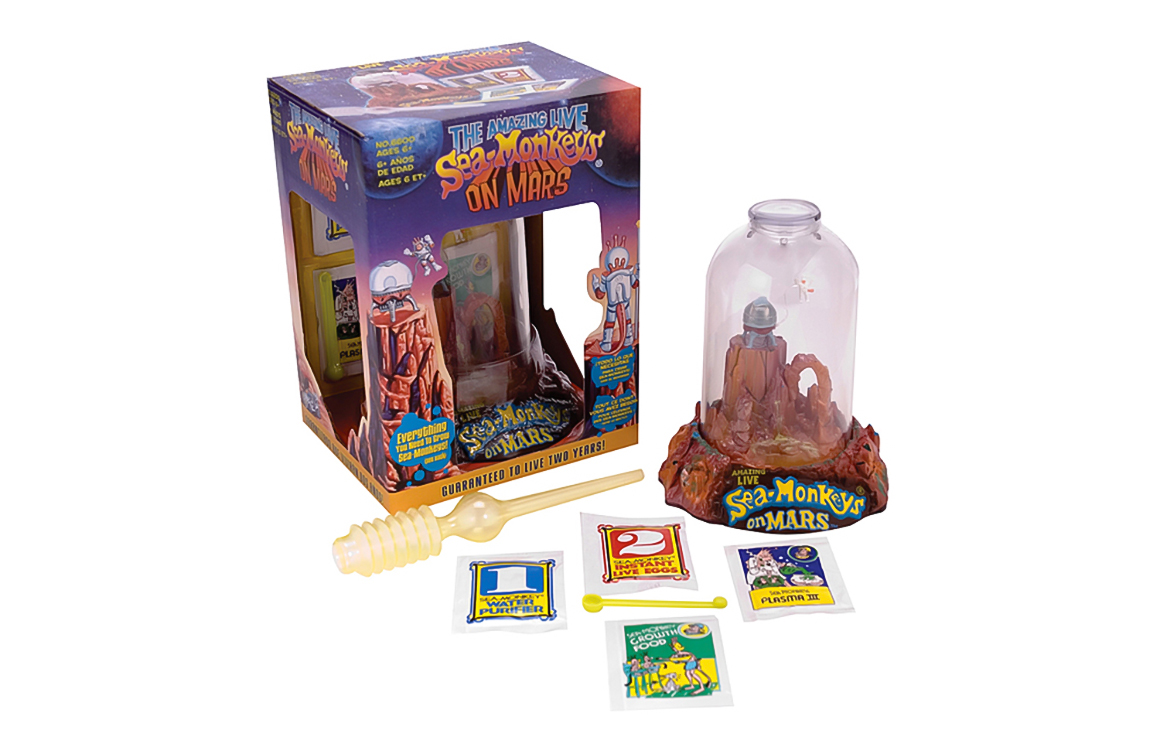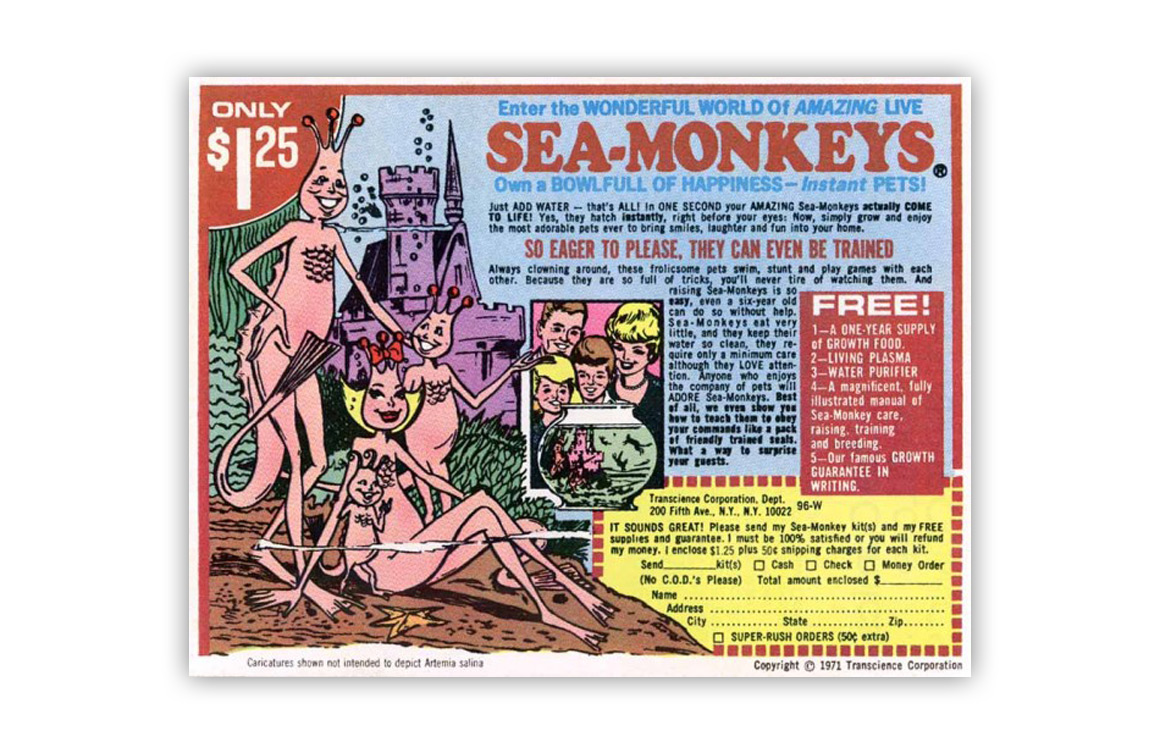May 16th is National Sea-Monkey Day, a perfect time to check in on one of my favorite “instant pets.” Sea-monkeys first hit the scene in 1960 and have remained a pop culture staple to this day, amassing millions of dollars in sales over the years.
*SPOILER ALERT*
Of course, sea-monkeys aren’t monkeys at all, or even actual denizens of the deep, for that matter. These facts might not be readily apparent if your knowledge of these tiny creatures was gleaned by reading any of the sensationalist ads that appeared in comic books throughout the 1960s and 1970s. The “monkeys” are a hybrid species of brine shrimp known as Artemis-NYOS. NYOS is short for New York Oceanic Society, the Long Island-based lab where the shrimp were originally grown and crossbred.
The catalyst behind the Sea-Monkey phenomenon was one Harold von Braunhut. He’s also well known for several other novelty products, including X-Ray Spex and Invisible Gold Fish. Historical accounts say that von Braunhut became fascinated with using brine shrimp as a novelty toy when he saw them being sold in a pet store and noticed they could survive for extended periods of time out of water – a scientific term known as cryptobiosis. To von Braunhut, this meant that brine shrimp could be easily packaged, marketed, AND sold like pet fish.
“INSTANT LIFE”
In 1960, Sea-Monkeys began to appear in comic book ads, although without their soon-to-be-famous name. In early advertising, they were marketed as “instant life” and sold for $0.49. Lack of sales forced von Braunhut to take a step back and re-tool the brand.
He secured the services of cartoonist Joe Orlando, who designed and illustrated a series of comic book ads. The name “instant life” was replaced with the more market-friendly “Sea-Monkeys”, a moniker inspired by the brine shrimps’ long tails and ability to live in water. An updated ad campaign began to appear in comic books in 1964. Around the same time, von Braunhut founded Transcience Corporation to streamline the manufacturing and sales.
SECRET FORMULA
The key to product’s early success was ensuring that it worked as advertised. Von Braunhut worked closely with marine biologist Dr. Anthony D’Agostino to develop the right mix of nutrients and chemicals in dry form that could be added to plain tap water to create a purified habitat for the shrimp to hatch properly. Von Braunhut was granted a patent for this process on July 4, 1972. U.S. Patent #3,673,986 provides insight into the mix of chemical compounds and brine shrimp eggs that make up his secret formula. As proof that the formula works, today’s Sea-Monkeys come with a two-year life guarantee.
ADVERTISING
Print advertising for Sea-Monkeys puts the “S” in sensationalism. A series of ads, illustrated by Joe Orlando (later Vice President of DC Comics), ran in comic books throughout the 1970s and depicted the sea creatures as a nuclear family, sans clothing, with crowns on their heads.
FUN FACTS
A typical Sea-Monkey starter kit consists of a small aquarium, three small numbered packages (1 – Water Purifier, 2 – Instant live eggs, 3 – Growth food) and a feeding spoon. The packages are added to plain tap water in sequential order, based on a schedule outlined in the included directions. If all goes well, Sea-Monkeys will begin to appear in the tank in 24-36 hours. They start out tiny (about the size of a pin head) and then grow to ½ to ¾ of an inch in length over a four-week period.
Sea-Monkeys have always been marketed for the ability to do “tricks.” The reality is that most of their tricks are based on their biological makeup. They’re light sensitive, which means they can be “trained” to follow a light source being moved around outside the tank. They’re translucent and born with a single eye, but may grow up to two more as they reach maturity. Finally, the entire colony is self-replicating and will reproduce sexually or asexually on a regular basis.
Note: If you buy something using the eBay link in this story, we may earn a small commission. Thank you for supporting independent toy journalism!


